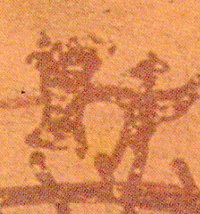 |
The Greek Age of Bronze
Other Shields |
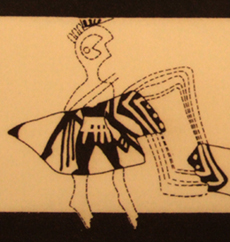 |
The left image shows a seal stone from Knossos dated at the end of the Middle Minoan period (about 1600-1550 BC) where a warrior or deity is bearing a small rectangular shield. Because of its shape this shield seems to be a short version of the tower shield used during the same period.
The right images shows a stone relief from Phaistos dated around 16th century BC where a strange shield, a sword and a baldric are represented. Because of the artistic stylization it is not possible to identify the actual size and the shape of this shield, even if decorations and a central longitudinal reinforcement are recognizable. |
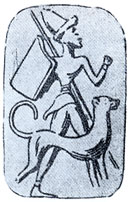 |
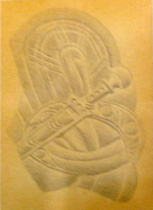 |
| A small rectangular shield with blunted corners is handled by the warrior represented on a bronze statuette from an unknown Aegean area dated around LH III B-C (about 1200 BC). The statuettes show a mix of Aegean and Oriental elements as attested by the unusual curved sword. |
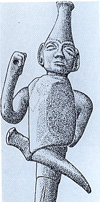 |
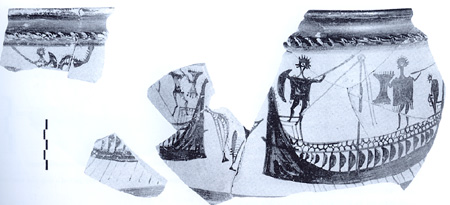 |
A square or rectangular fringed shield with two cuts on side is well depicted in the naval battle scene on a krater from the site Kynos near Locris dated LH IIIC.
A possible indication of fringed shield is also attested in the Iliad (*1) |
| Same type of square shield with lateral cuts and fringes is pictured (second warrior from the left) in this other naval battle representation on a krater fragment always from Kynosdated LH IIIC.
|
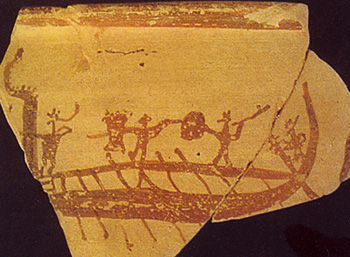 |
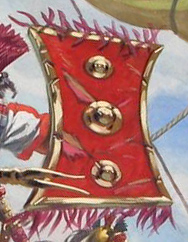 |
Based on the above representations a reasonable reconstruction of a square shield with lateral cuts and fringes can be hypothize. The shield has been completed with edge bronze reinforcement and central bosses. |
| Same type of square shields with lateral cuts but in this case without fringes are well attested in this others krater fragments from Kynos dated LH IIIC as well.
|
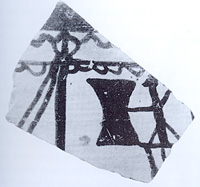 |
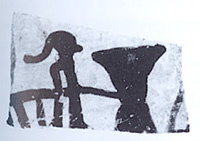 |
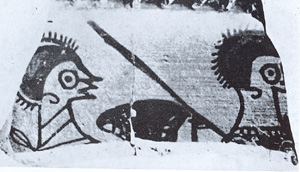 |
A similar shield with large cuts on both sides seems also carried by the left side warrior depicted in this krater fragment from Iolkos dated LH IIIC.
These shield are very similar to the one used by Anatolian populations like the Hittites. |
Similar type of large square shields (almost a body shield) with lateral cuts is also represented in this krater fragment from Thermon dated from the second half of the 11th Century BC.(drawing by Diana Wardle)
Because of its design this shield was probably covered with a bronze embossed and decorated sheet similar to the one also attested on some round shields coming from the central/north Europe (see the page dedicated to the round shields) |
 |
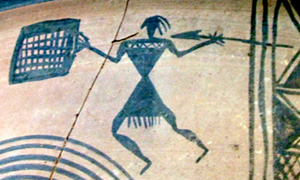 |
A square shield probably made of wickers is well depicted in a krater from Crete dated XI century BC. Also in this case similar square shield was also used by Anatolian populations like the Hittites. |
Several bronze fragments from the grave 40 in Kalorisiki Cyprus dated around 11th Century BC have been wrongly reconstructed as elements of a trapezoidal shield in shape of tailcoat.
These upper and edge bronze bands are actually the cheek guards and the crest holder of a conical helmet (see the page dedicated to the late helmets). Thus only the three bosses are part of a shield which shape is unknown. |
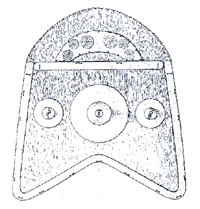 |
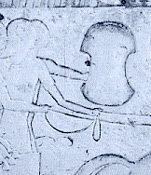 |
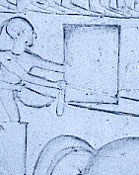 |
As above mentioned the square shields and the one with lateral cuts were also used by the Hittite as depicted on the Egyptian's Quadesh reliefs in the temple of Rameses II at Abydos dated around 1270 BC. |
| CONCLUSION
|
| Besides the huge body-shields and the small, medium and large circular ones other type of shields are attested in the Aegean area. In Crete small rectangular shields were used since the 16th century BC.
Large or medium size square shields generally with fringes and two large cuts on the sides are well depicted in some pottery fragments. These shields recall the ones used by Anatolian populations like the Hittites. Also these type of shields were probably made of several layers of ox or goat hide, wood or wickers and they were sometimes reinforced with metal elements and bosses as attested by the "trapezoidal/tailcoat shaped" specimen found in Cyprus.
|
|